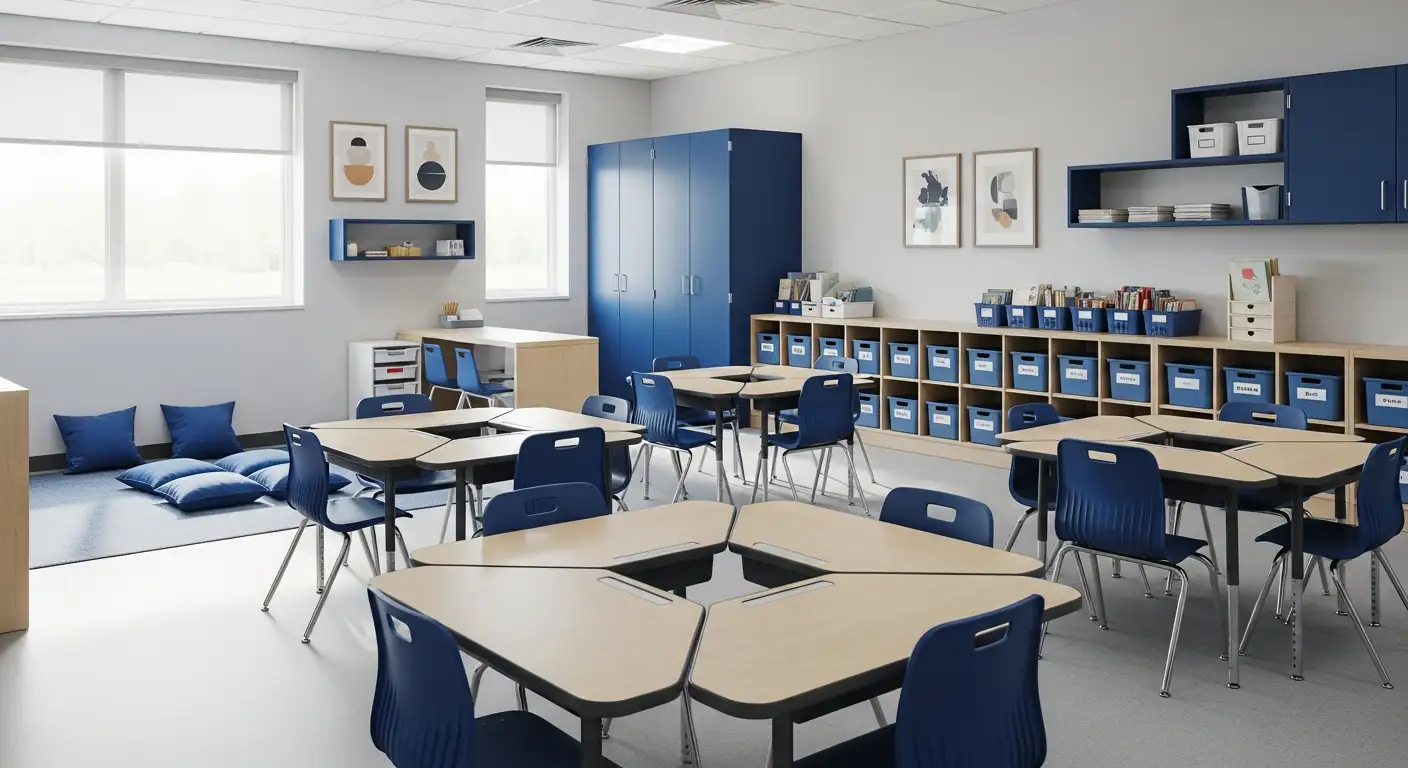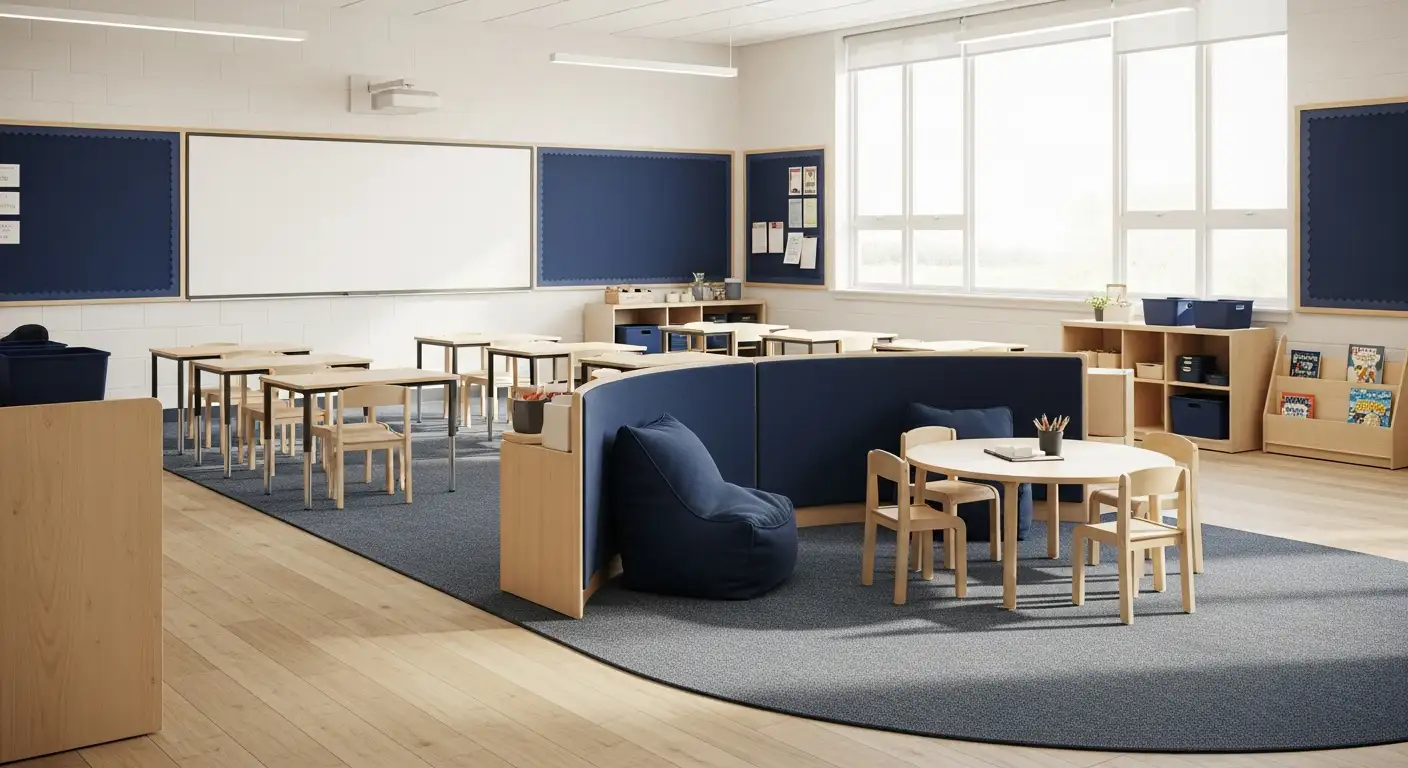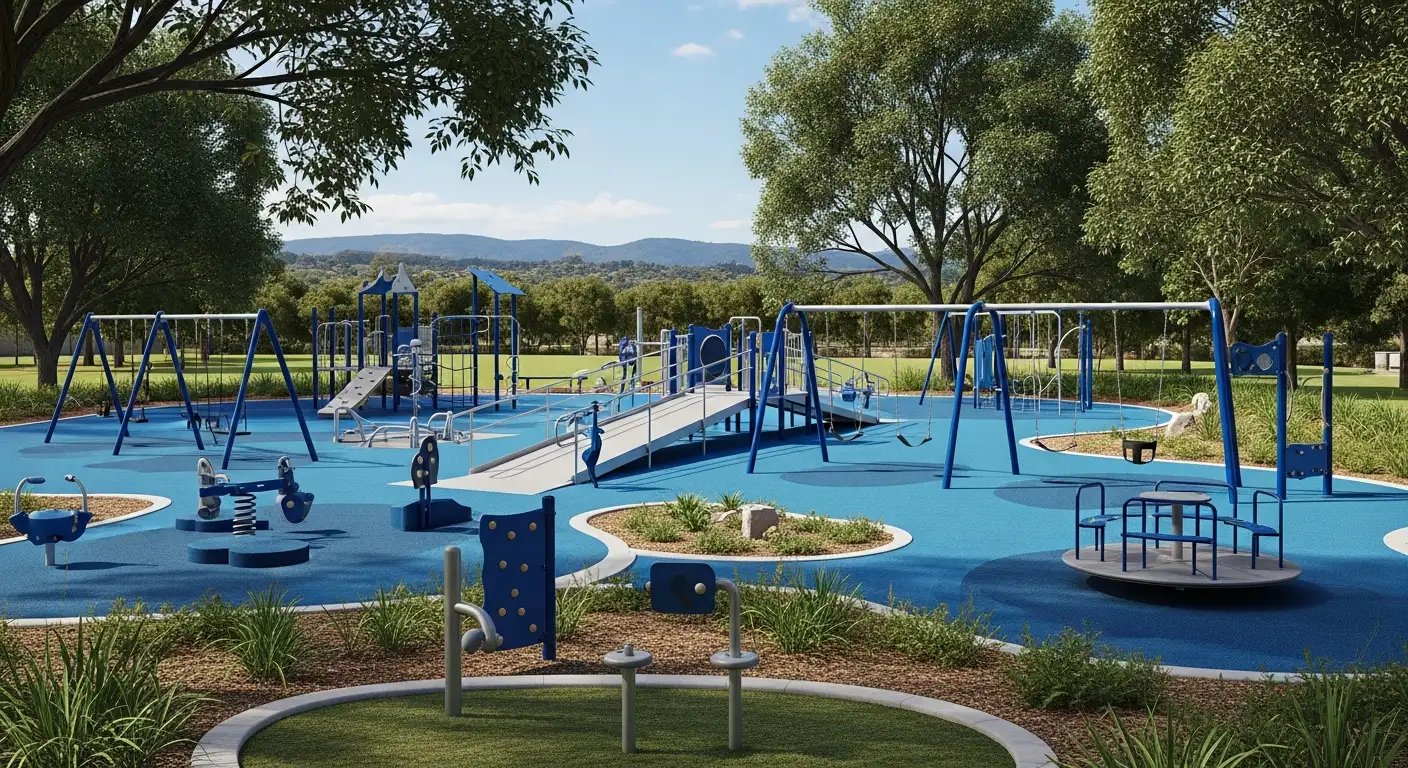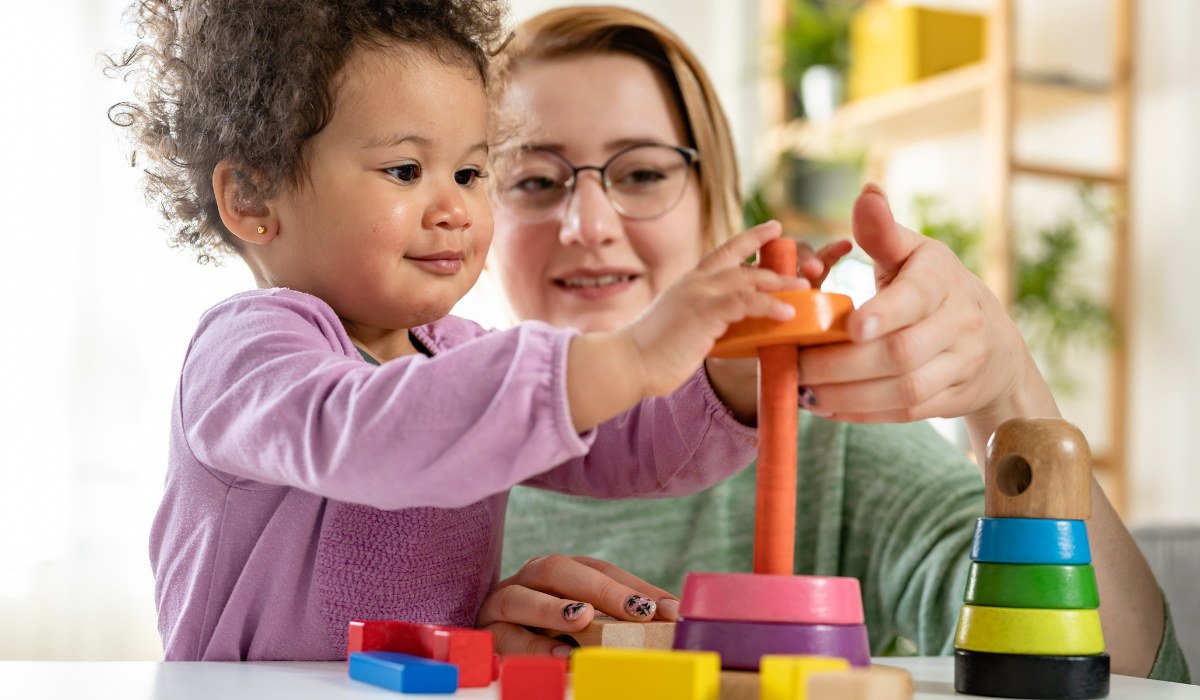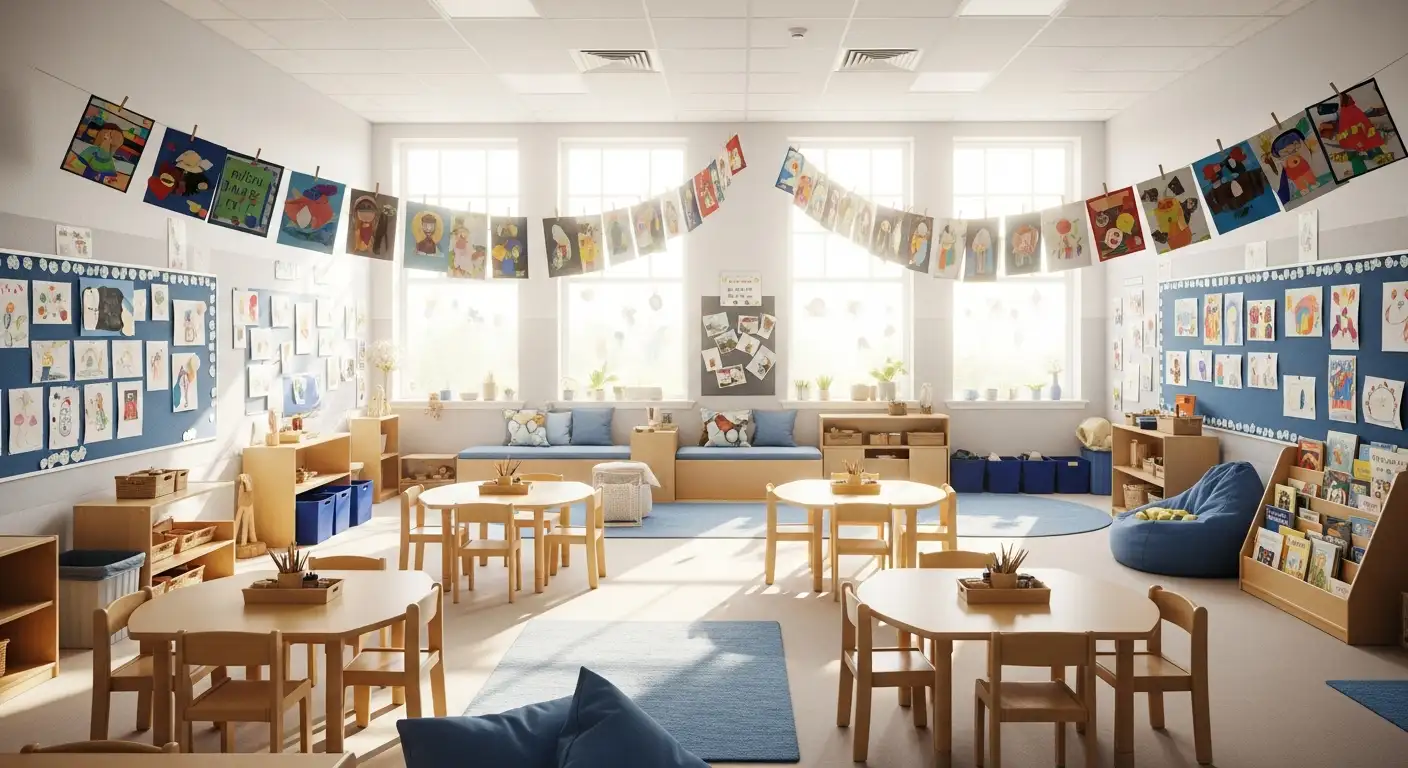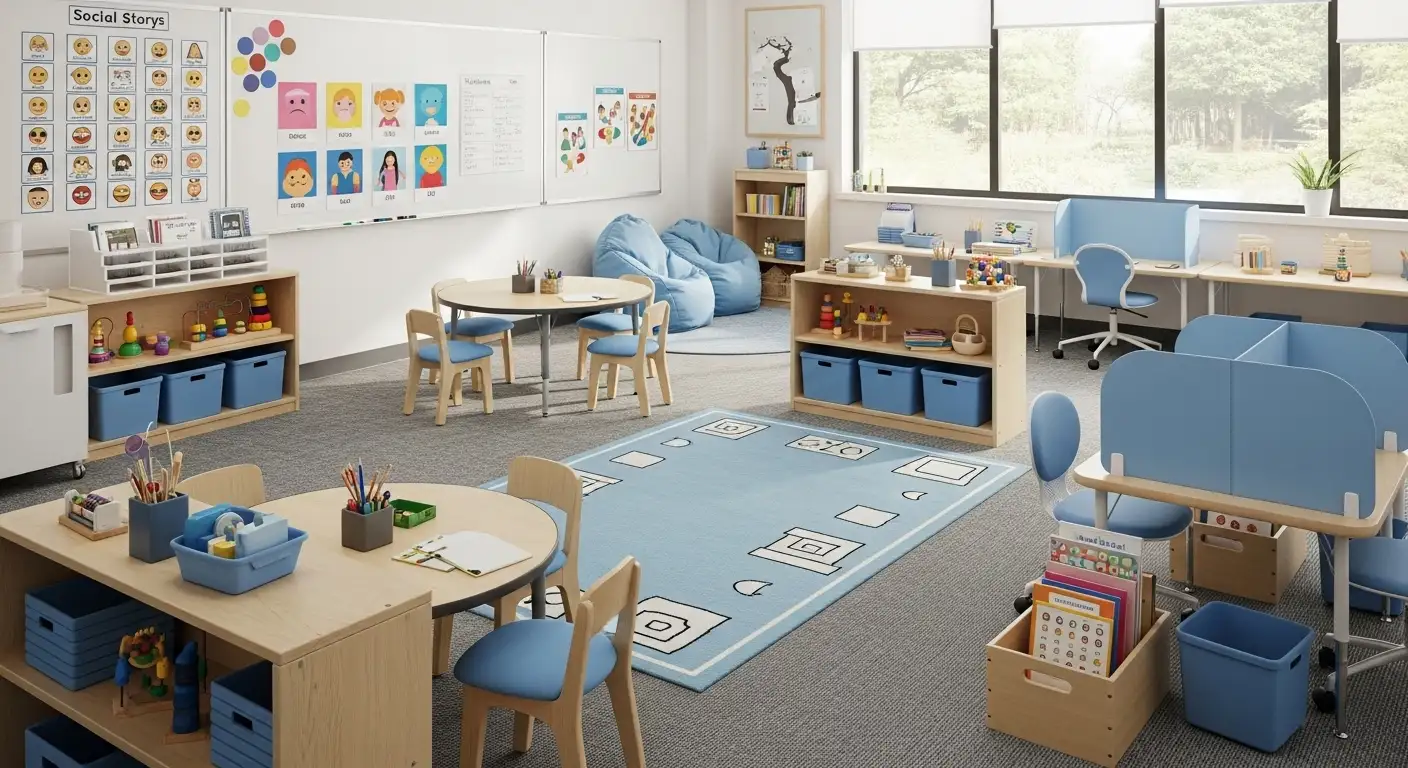How to Develop Safety Plans for Autistic Children
Ensuring Safety through Thoughtful Planning for Children with Autism

A Guide to Creating Effective Safety Protocols
Developing comprehensive safety plans for children with autism is integral to supporting their well-being. These plans help caregivers, educators, and community members work together to prevent dangers, respond to emergencies, and promote independence. Tailored strategies, regular updates, and community collaboration are fundamental components of effective safety management, ensuring children’s safety across various environments.
Key Participants in Autism Safety Planning
When establishing safety plans for autistic individuals, involving a comprehensive team of key participants is essential for effective implementation and ongoing support. This team typically includes school personnel, caregivers, neighbors, and first responders, each playing specific roles in ensuring safety.
Involving school personnel, caregivers, neighbors, and first responders is crucial to create a well-rounded safety net. School staff can assist in teaching safety routines, monitor behaviors, and communicate with families about safety concerns during school hours. Caregivers, such as parents and extended family, are responsible for developing, implementing, and regularly updating safety plans tailored to the individual's needs. Neighbors in the community can support by being aware of the child’s tendencies, such as wandering, and providing assistance if needed. First responders, including police and emergency medical teams, need to be informed and prepared to respond effectively should an incident occur.
Roles and responsibilities of each participant include a variety of essential tasks. School personnel are often responsible for maintaining safety protocols within educational settings, including visual supports and safety drills. Caregivers prepare detailed safety plans, secure the home environment, and ensure identification items are always worn. Neighbors can help by recognizing signs of wandering or distress and contacting emergency services if necessary.
First responders benefit from having access to emergency contact information, recent photos, and details about the child's behaviors. They should also be trained on autism-specific safety considerations. Regular communication among these participants ensures everyone is aware of safety strategies, emergency procedures, and updates to the safety plan.
A tailored safety plan might include securing the environment with locks and alarms, using GPS and tracking devices, establishing routines, and practicing safety skills through visual tools or social stories. It also involves preparing emergency contact lists, medical information, and sensory details that could aid responders.
Involving these participants in ongoing safety assessments and updates is vital as children grow and their needs change. Effectively coordinated efforts among all involved foster a safer environment and quicker response during emergencies, preventing tragic incidents related to wandering, falls, toxins, or other hazards.
Assessing and Securing the Environment
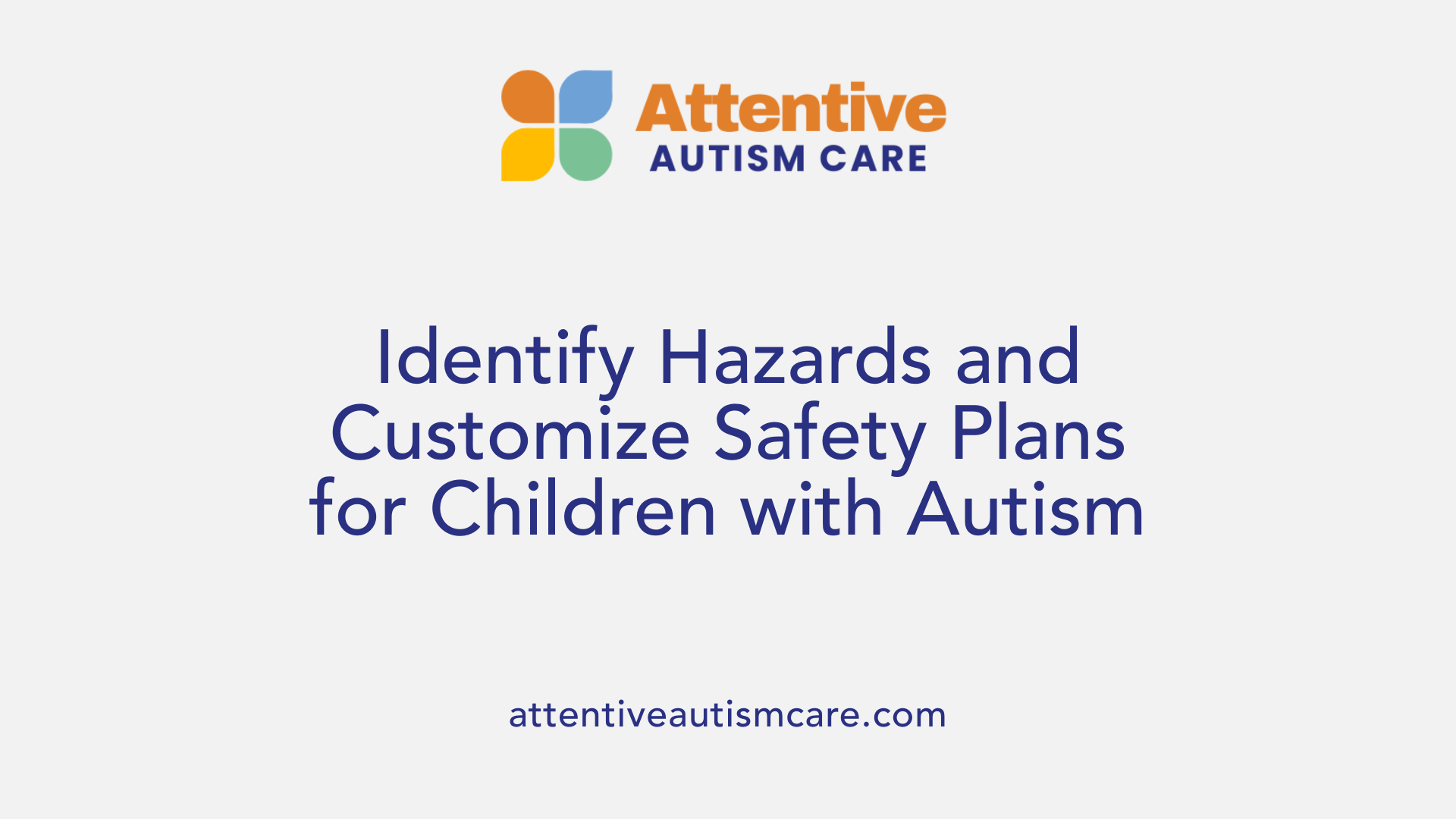
What safety considerations should be taken into account when planning for children with autism?
Creating a safe environment for children with autism requires careful evaluation of potential hazards across all the settings they inhabit, including home, school, and community. Conducting thorough risk assessments helps identify dangers such as wandering, drowning, household toxins, and unsafe environmental areas.
It’s important to involve key participants—parents, caregivers, teachers, neighbors, and community resources—in developing comprehensive safety plans tailored to the child's individual needs. These plans should prioritize preventing wandering by installing locks on doors, fences, and alarms, and using GPS tracking devices or IDs like MedicAlert to aid in locating the child if they wander.
Teaching safety skills directly through visual supports such as picture schedules, social stories, and choice boards can improve understanding and communication about safety rules. Regular safety talks and role-playing activities help reinforce appropriate responses to dangerous situations.
Safety equipment like stair gates, smoke detectors, and outlet covers protect against household hazards. Establishing clear routines and visual supports helps children anticipate daily activities, reducing anxiety and risky behaviors.
Community awareness also plays a vital role. Educating neighbors and first responders about a child's tendencies and providing them with updated photographs and contact details ensure quick, effective assistance if needed.
Finally, regular review and updates of safety protocols in response to developmental changes or new challenges are essential. Utilizing resources like printable safety checklists and emergency information forms helps families stay prepared.
This proactive approach, combining environmental modifications, teaching, and community engagement, ensures that children with autism remain safe across all areas of life.
Developing and Teaching Safety Skills
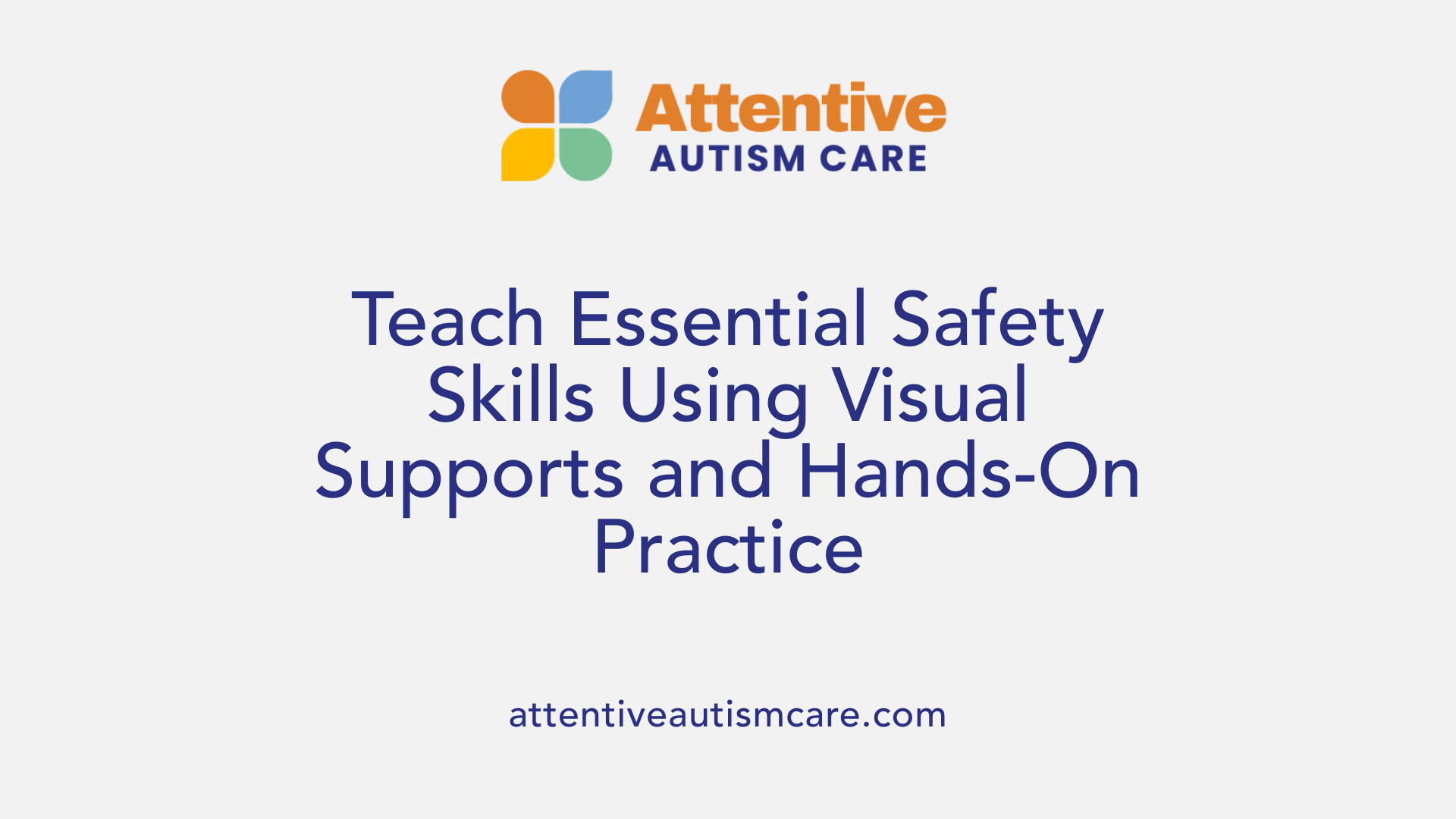
How can caregivers teach autistic children about safety through practical methods?
Teaching safety skills to autistic children involves a combination of visual supports, structured routines, and hands-on training techniques. Evidence-based strategies such as Behavioral Skills Training (BST) are particularly effective. BST includes clear instructions, modeling desired behaviors, role-playing real-life safety scenarios, and providing constructive feedback until the child demonstrates mastery.
Integrating safety instruction into the child's Individualized Education Plan (IEP) ensures the training is tailored to their specific age, developmental level, and individual needs. This approach covers critical safety areas such as stranger safety, crossing streets, fire safety, and emergency response.
Visual aids like picture schedules, social stories, and visual cues help children understand safety procedures more clearly. These supports make abstract concepts tangible, aiding memory and comprehension.
In situ training (IST), or natural environment teaching, allows children to practice safety skills in real-life contexts, like crossing the street at a crosswalk or using a phone in an emergency. This context-specific training helps bridge the gap between learning and real-world application.
Regular data collection and reinforcement are essential to monitor progress and maintain safety skills over time. Positive reinforcement encourages children to repeat safe behaviors, fostering independence and confidence.
Overall, consistent, patient, and individualized instruction, combined with visual supports and in-the-moment practice, equips autistic children to navigate safety challenges effectively.
Creating Personal and Autism-Specific Safety Plans
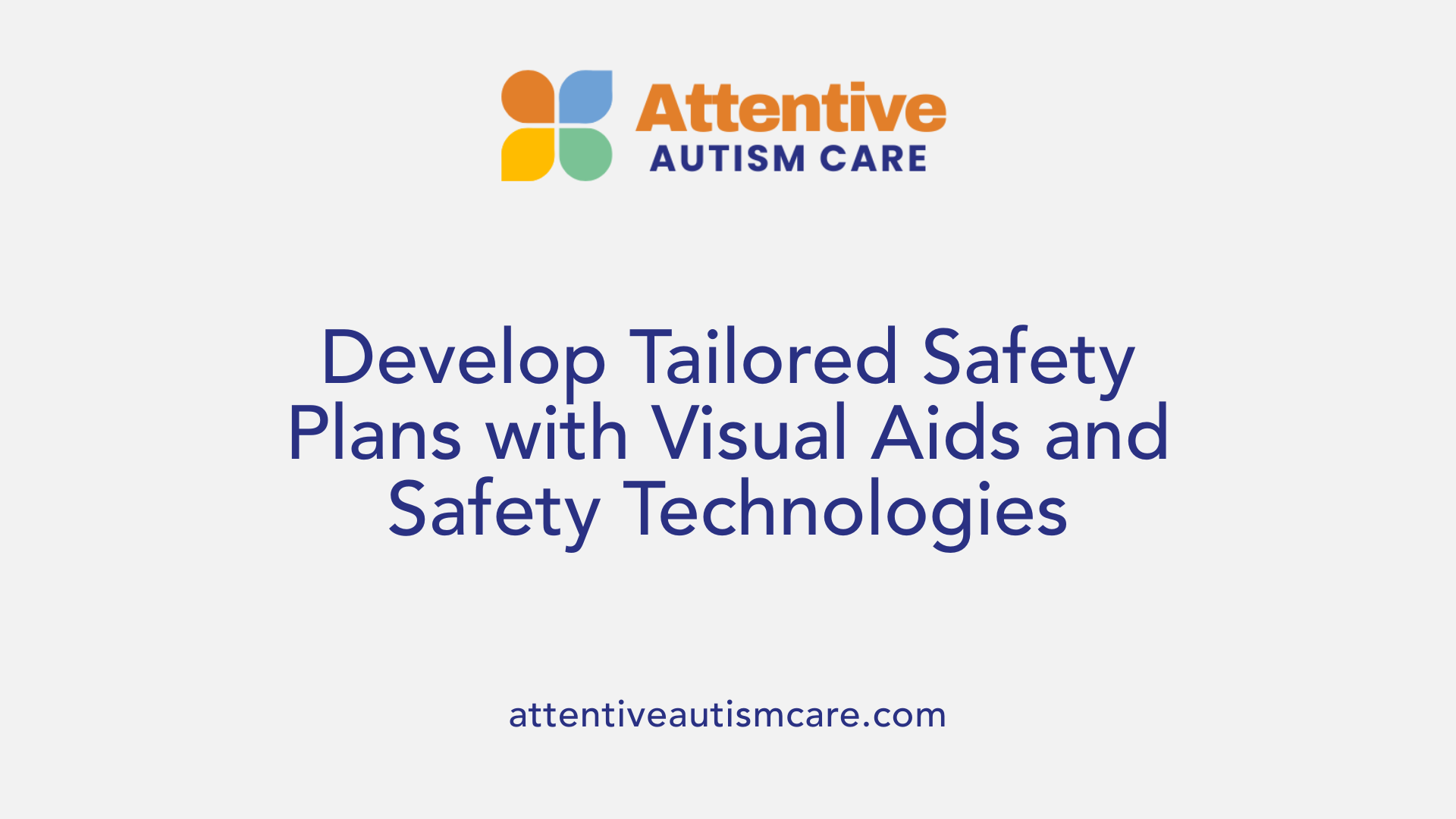 Developing a tailored safety plan is essential for ensuring the well-being of individuals with autism. These plans include crucial details such as emergency contacts, sensory preferences, behavioral triggers, and specific risks like wandering or household hazards. Personalized safety plans should be created with input from caregivers, teachers, and other support personnel to reflect the individual’s unique needs and environment.
Developing a tailored safety plan is essential for ensuring the well-being of individuals with autism. These plans include crucial details such as emergency contacts, sensory preferences, behavioral triggers, and specific risks like wandering or household hazards. Personalized safety plans should be created with input from caregivers, teachers, and other support personnel to reflect the individual’s unique needs and environment.
In addition to personal information, safety plans must incorporate effective communication strategies, such as visual schedules and social stories. These tools help children understand safety rules, recognize dangerous situations, and respond appropriately. Ensuring all caregivers and involved community members have access to the current safety plan fosters a unified and proactive safety approach.
Using safety identification products and technology is a vital aspect of autism safety planning. Items like MedicAlert IDs, GPS tracking devices such as AngelSense or Project Lifesaver, and identification bracelets or tattoos can dramatically improve the chances of safe recovery if a person with autism wanders or gets lost. These tools provide first responders with immediate access to vital health and contact information, facilitating quick and effective intervention.
Are there templates or resources available for creating autism-specific safety plans?
Yes, there are many resources designed specifically for autism safety planning. Various templates, checklists, and guides are available online to help caregivers craft comprehensive safety strategies. For example, the Autism Speaks Safety Toolkit offers printable forms, emergency action plans, and FAQ sheets that address the needs of individuals with autism. These materials often incorporate visual supports and simple language, making them accessible and easy to use.
Organizations such as ASERT and the Autism Society provide training programs, downloadable safety plan templates, and personalized safety kits. These resources are backed by research and are intended to be adaptable to the individual's developmental level, sensory sensitivities, and behavioral considerations. By utilizing these tools, families and professionals can develop effective, personalized safety plans that are both practical and reassuring.
Regularly revisiting and updating safety plans as the person’s needs evolve ensures continued safety and confidence. Combining these resources with community awareness efforts and the use of safety identification technology creates a comprehensive safety net for individuals on the autism spectrum, promoting independence while minimizing risk.
Emergency Preparedness and Community Collaboration
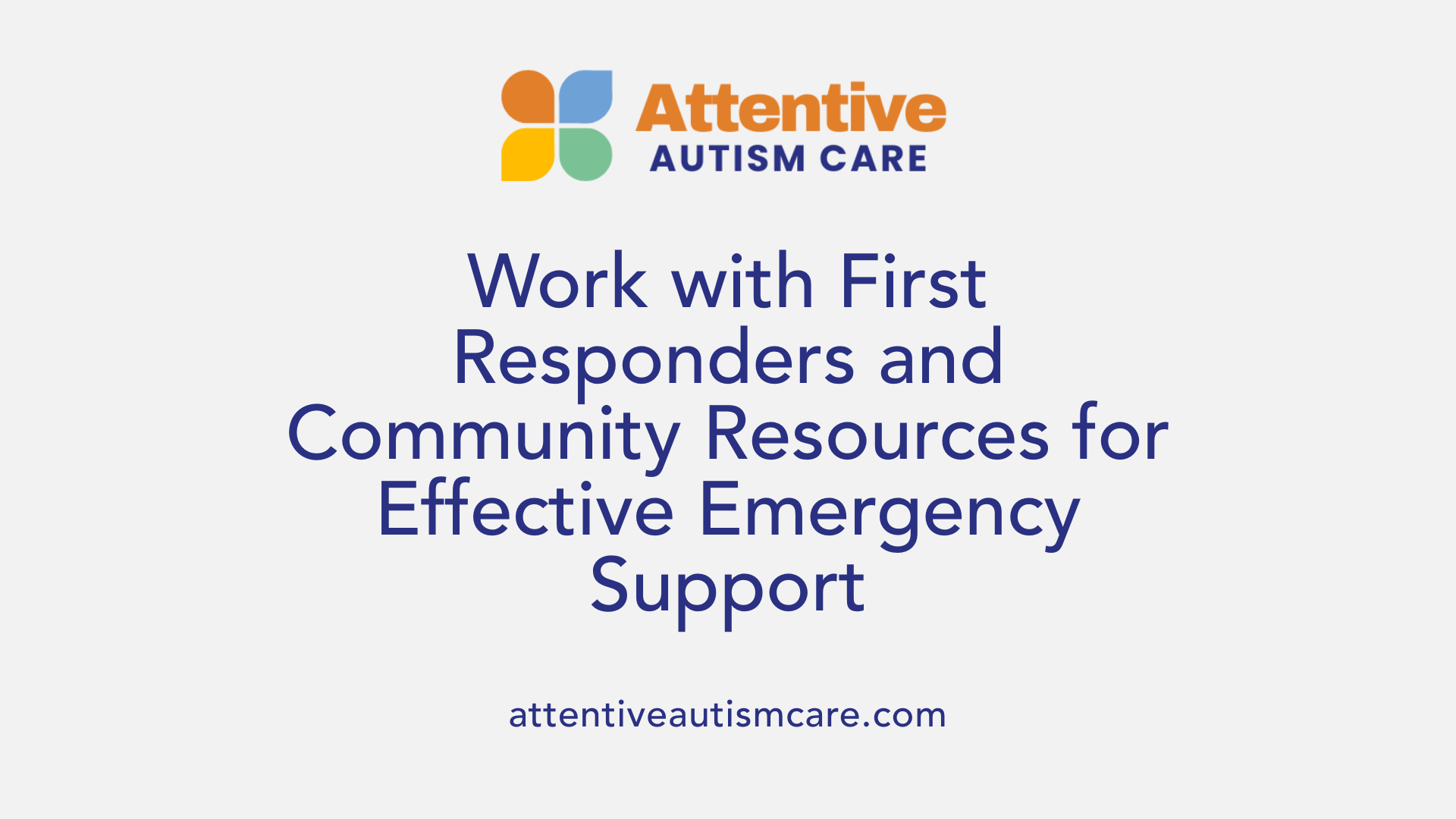
How can emergency preparedness and collaboration with first responders enhance autism safety?
Preparing for disasters and crises is essential to ensure the safety of children with autism. Families should develop detailed emergency plans that include important items like comfort objects, medical information, and current photographs of the child. Having clear, accessible documentation helps first responders understand the child's unique needs during an emergency.
Sharing specific information about the child’s communication methods, wandering tendencies, and sensory sensitivities with local first responders, such as police, firefighters, and emergency medical services, is crucial. Many resources, like Autism Speaks, provide guidance on how to effectively communicate these needs and establish protocols.
Practicing emergency drills together with the child and first responders can improve coordination and reduce anxiety in real situations. This rehearsal helps responders recognize cues and respond appropriately, making the process smoother during actual emergencies.
Engaging with community resources like the Autism Response Team or local safety programs helps families access tailored support and guidance. These collaborations foster a safer environment by ensuring that everyone involved understands the child's needs and knows how to act quickly.
Creating a network of community collaboration involves schools, caregivers, neighbors, and local authorities. This comprehensive approach not only prepares the family but also builds community awareness, which is vital to reducing risks and enhancing safety during unpredictable events.
In summary, working closely with first responders and community organizations through shared information and regular practice can significantly improve emergency responses, ensuring that children with autism are protected and supported effectively during crises.
Activities and Questions to Promote Safety Awareness
To effectively promote safety awareness among children with autism, parents and caregivers can utilize a variety of engaging activities and thoughtful questions. These strategies help children understand safety concepts, recognize hazards, and develop problem-solving skills critical for their independence and protection.
One practical approach is role-playing different safety scenarios. For example, caregivers can simulate situations like crossing the street, recognizing dangerous substances, or responding to a stranger. Using visual supports such as picture schedules or social stories can reinforce safety routines and expectations, making abstract concepts more accessible.
Developing daily routines with visual cues helps children anticipate daily activities, reducing anxiety and accidents. These routines could include safety checks around the house or practicing safe ways to interact online or in public spaces.
Asking open-ended questions encourages children to think critically about safety. Examples include: “What should you do if you see a stranger?” or “Where is a safe place if you get lost?” These questions foster communication and help children articulate their understanding of safety rules.
Creating personalized safety plans tailored to each child's needs involves clear instructions on what to do in emergencies, who to contact, and how to stay safe. Visual supports and social stories are invaluable for explaining safety rules about water, transportation, household hazards, and community environments.
Education about community safety is also vital. This includes teaching children how to interact safely with law enforcement, use public restrooms appropriately, and handle money safely. Role-playing these interactions helps reduce fears and confusion.
Overall, these activities and questions build a foundation of safety awareness that is adaptable to each child’s development level and unique needs. Consistent practice and regular revisiting of safety concepts ensure children become confident and proactive in maintaining their safety.
For further information, searching “Promoting safety awareness among children with autism” can yield helpful resources and guidelines to expand safety education efforts.
Monitoring, Revising, and Growing in Safety Skills
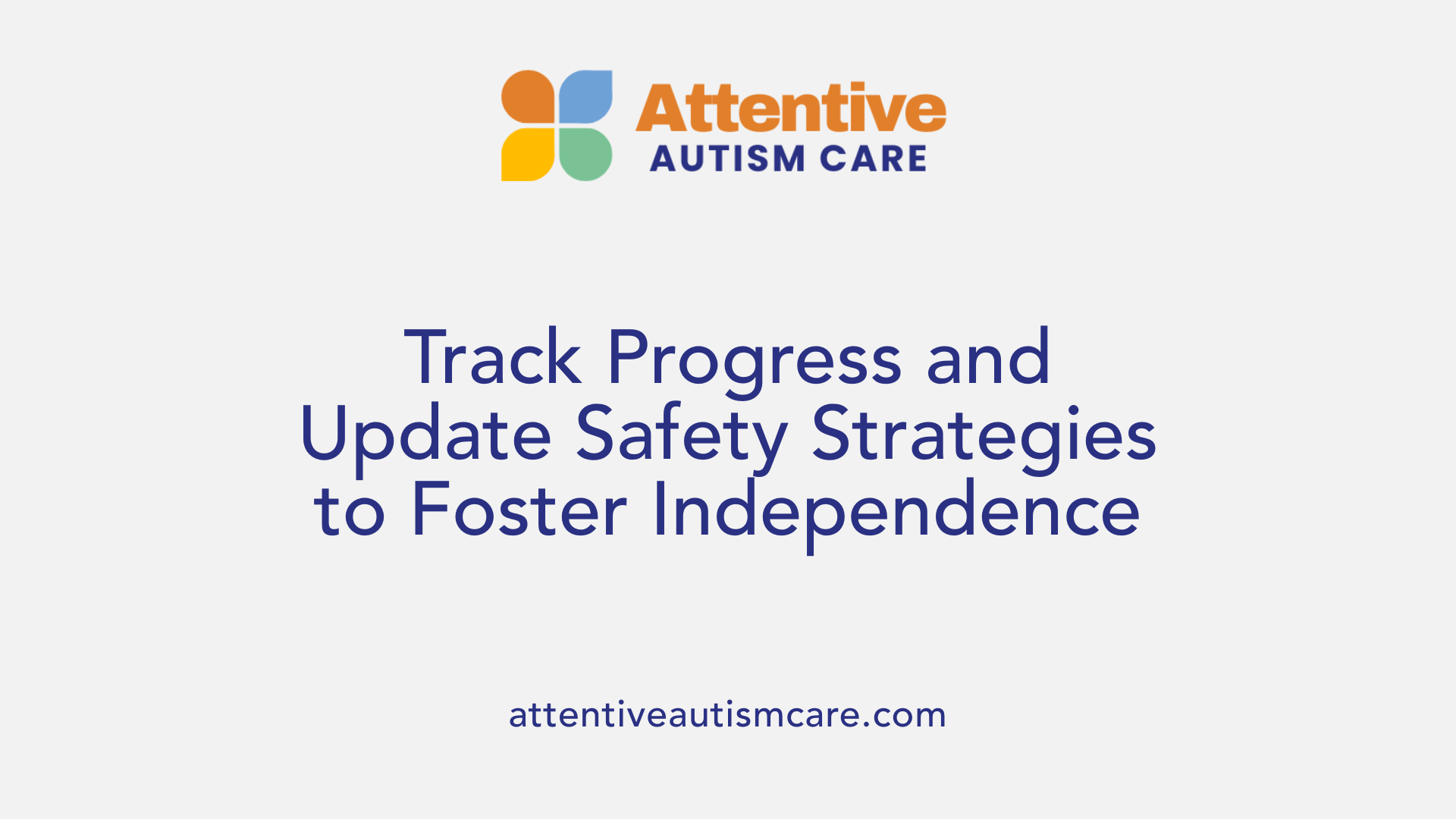
Recognizing growth in safety awareness and independence among children with autism
Tracking progress in safety skills is an important part of supporting children with autism as they grow. Development in safety awareness often indicates increased independence and confidence in managing risks.
When children learn and routinely practice safety techniques, they become more capable of recognizing hazards and responding appropriately. This growth can be observed through their ability to follow safety routines, understand rules, and communicate dangers effectively.
Regularly reviewing and updating safety plans ensures they stay aligned with the child's evolving needs and abilities. As children acquire new skills and face different environments, safety strategies should adapt accordingly.
Success in mastering safety routines highlights their development in self-advocacy and self-protection. These skills not only make everyday activities safer but also foster a sense of independence.
Consistent reinforcement through positive feedback, community involvement, and ongoing education helps nurture these skills. Ultimately, fostering growth in safety awareness helps children with autism navigate their surroundings more safely and with greater confidence.
By understanding the signs of developing safety independence, caregivers and educators can better encourage and support each child's unique journey towards autonomous safety management.
Building a Safer Future for Children with Autism
Developing and maintaining tailored safety plans is a collaborative, ongoing process that empowers children with autism to navigate their environments safely. Through individualized assessments, teaching strategies, environmental modifications, and community partnerships, families and professionals can create a comprehensive safety network. Regular updates and practice ensure these plans adapt to each child's evolving needs, fostering independence and resilience. A proactive approach to safety planning not only minimizes risks but also promotes confidence, well-being, and inclusion for children with autism, helping them thrive in all areas of life.
References
- Safety Tool Kit - Autism Speaks
- Strategies For Enhancing Safety For Autistic Children
- The Safety Planning Cycle | Organization for Autism Research
- Safety in the Community for Children with ASD | Autism MB
- Autism Adapted Safety Plans | Neurodevelopment and Disability
- Wandering prevention | Autism Speaks
- Safety Basics for Families Living with ASD - CHOP Research Institute
- Safety / Minnesota Autism Portal
- Ensuring Safety: A Parent's Perspective - AIDE Canada
- Elopement in Autism: How to Create Your Safety Plan - Healthline







